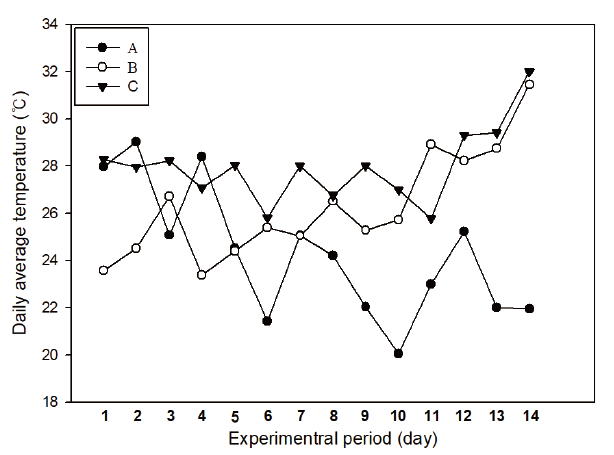Abstract
This study was conducted to evaluate the degree to which changes in temperature affect the efficacy of herbicides when applied to the exotic weed
Figures & Tables

Fig. 1. Daily average temperature (A, 24℃; B, 26℃; C, 28℃) during experimental period in greenhouse.


